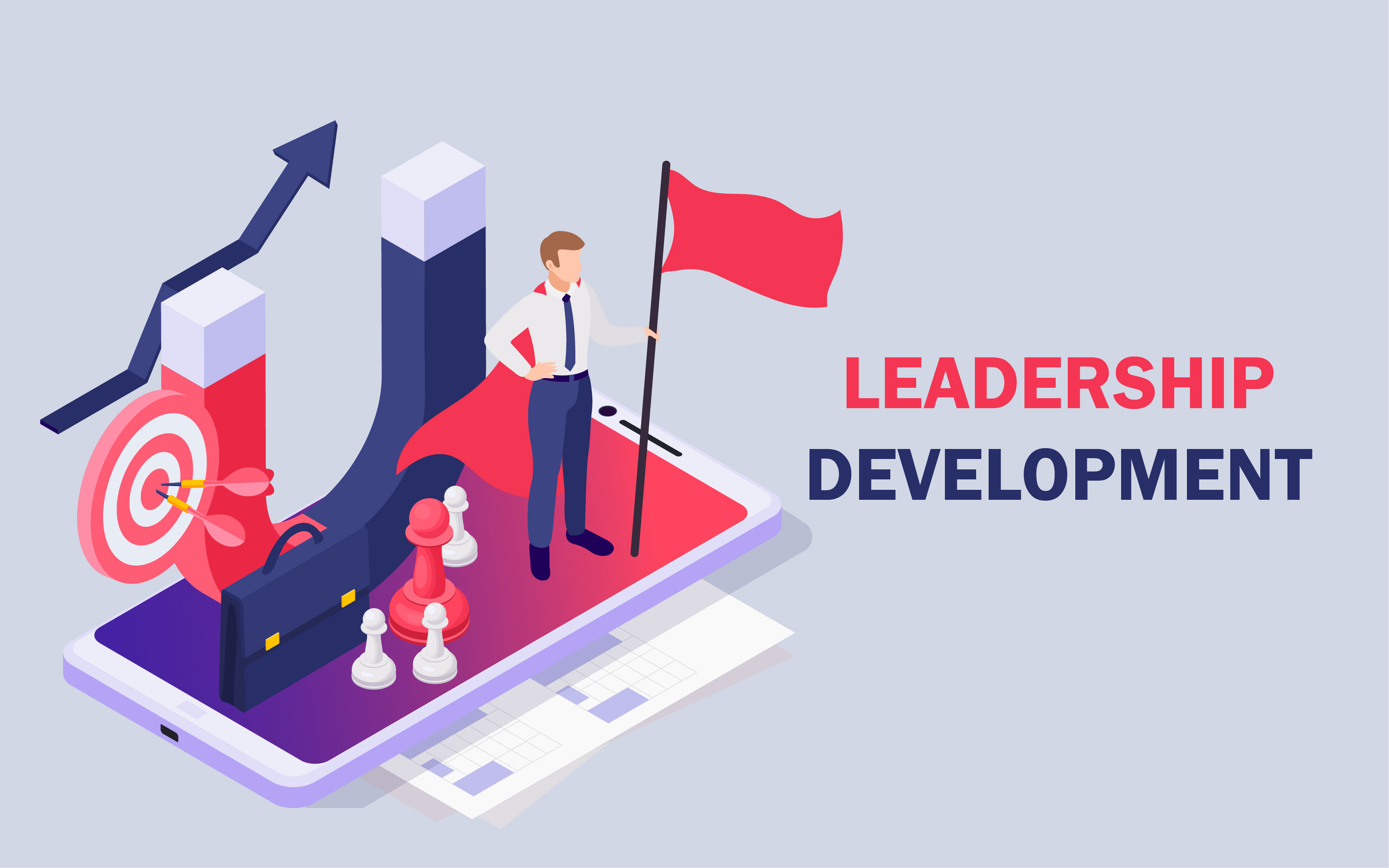A short discussion on Leadership Development & its Importance.
Sat, 30 Dec 2023

Follow the stories of academics and their research expeditions
Title: The Power of Digital Marketing- “A Roadmap to Online Success"
In the
fast-paced digital era, a world without the internet is unimaginable. To be successful in online marketing you
need mastery of the details to compete across the main digital platforms that
consumers or businesses use to find and select products. This transition to the online world has
also changed the way businesses promote their products and services. In this blog, we'll take a deep dive
into the world of digital marketing, exploring its key components, strategies,
and why it's an indispensable tool for modern businesses.
Digital Marketing: Refers to the use of
digital channels, platforms, and technologies to promote and advertise
products, services, or brands to a target audience. It encompasses a broad
range of online marketing activities aimed at reaching consumers through
various digital mediums, taking advantage of the internet and electronic
devices.
Positive thing of digital marketing: Digital marketing
offers numerous positive aspects for businesses, making it an essential component
of modern marketing strategies. Here are
some key advantages:
Global Reach: Digital marketing allows businesses
to reach a global audience. Through online channels, companies can connect with
potential customers from around the world, expanding their market reach far
beyond geographical boundaries.
Cost-Effectiveness: Compared to
traditional marketing methods, digital marketing often proves to be more
cost-effective. Online advertising, social media campaigns, and email marketing
can be tailored to fit various budget sizes, enabling small businesses to
compete on a more level playing field with larger enterprises.
Targeted Advertising: Digital marketing platforms provide
sophisticated targeting options. Advertisers can precisely target specific
demographics, interests, and behaviors, ensuring that their messages reach the
most relevant audience.
Real-Time Analytics: One of the significant advantages of
digital marketing is the ability to track and measure campaign performance in
real time. Analytics tools provide valuable insights into customer behavior,
allowing businesses to make data-driven decisions, optimize campaigns, and
achieve a higher return on investment (ROI).
Brand Visibility: Establishing and maintaining an online
presence is crucial in the digital age. Digital marketing enhances brand
visibility through various channels, including search engines, social media,
and content marketing, helping businesses stay top-of-mind among their target
audience.
Innovation and Creativity: Digital marketing platforms
continually evolve, offering new tools and technologies. This environment
fosters innovation and creativity, allowing businesses to experiment with
different strategies, formats, and content types to keep their marketing
efforts fresh and engaging.
Overall, digital marketing provides a powerful and versatile toolkit for
businesses to connect with their audience, build brand equity, and achieve
their marketing objectives in a rapidly changing digital landscape.
Let's break down the foundational elements:
1. Search engine
optimization (SEO): Search
Engine Optimization, commonly known as SEO, is a crucial component of digital
marketing that focuses on optimizing a website to enhance its visibility in
search engine results pages (SERPs). The primary goal of SEO is to increase
organic (non-paid) traffic to a website by improving its ranking for relevant
search queries.
There are several broad ways to improve your
website’s SEO:
On-Page Optimization: It involves optimizing the pages on your website by
conducting keyword research. Optimizing webpage elements such as titles, Meta
descriptions, headings, and content to align with targeted keywords. Improving
the website's overall user experience, including page load speed,
mobile-friendliness, and navigation.
Off-page Optimization is about improving your SEO by looking at pages external
to your website. Inbound links to your website—known as backlinks—are a
critical component of off page SEO. Networking with publishers, writing guest
posts, and providing information-rich content on your blog can help improve
your off-page SEO.
Analytics and Measurement: Using tools like
Google Analytics to track website performance, user behavior, and the
effectiveness of SEO efforts. Monitoring key performance indicators (KPIs) such
as organic traffic, keyword rankings, and conversion rates.
Algorithm Updates and Adaptation: Staying informed
about changes in search engine algorithms and adapting SEO strategies
accordingly. Following industry best practices to maintain and improve search
rankings over time.
Technical SEO deals with the backend elements of your website such as
coding, structured data, image compression and more. Optimizing these elements
can make it easier for search engines to “read” your site and improve your page
speed.
2. Social media
marketing: In the realm of digital marketing, Social Media Marketing
(SMM) has emerged as a vital strategy for businesses looking to connect with
their audience on a personal and interactive level. With billions of users on
platforms like Facebook, Instagram,
Twitter, LinkedIn, and more, social media provides an unparalleled
opportunity for brands to build awareness, engage with their community, and
drive business results. In the digital age, mastering the art of social media is
a cornerstone for businesses seeking to thrive and connect in the
interconnected world of social networks.
3. Content marketing: Creating and distributing valuable, relevant content to
attract and engage a target audience, with the goal of building brand authority
and establishing trust. Blogs, newsletters, white papers, social media posts, emails, videos,
and the like—to current and potential customers.
How content marketing works: Content marketers attract
an audience with compelling stories and by sharing valuable information. They
also use content channels to build community.
Top of the Funnel (TOFU): At the top of the funnel,
you want to build awareness with your content. Your target audience might know
they have a problem, but they aren't sure how to solve it. At this stage, you
can focus on brand awareness, broad pain points, and common questions.
Useful content types at the top of the
funnel include:
Ø Blog posts
Ø Social media posts
Ø Short-form video
Ø Podcasts
Ø Infographics
Ø Checklists
Ø Ebooks
Ø Webinars
Ø Video Ads
Middle of the Funnel (MOFU): In the middle of the
funnel, they're considering your product. They may have visited your site more
than once or they're engaging with your social media. They might have signed up
for your email newsletter. MOFU content should build a relationship with that person.
At this point, they understand their problem and are comparing possible
solutions. So, your content should educate them on the specifics of your
solution and show how it meets their unique needs.
Great middle-of-funnel content types
include:
Ø Email newsletters
Ø Product demos
Ø Landing pages
Ø White papers
Ø Case studies
Ø Longer-form videos
Ø Blog posts
Ø Interactive content
Ø Webinars
Bottom of the Funnel (BOFU): Bottom-of-funnel content
helps your prospect make a decision and ideally, convert. This stage focuses on
conversion. So, BOFU content should make it easy to test a product, understand
pricing, and make a purchase.
Bottom-of-funnel content types
include:
Ø Personalized emails
Ø User-generated content, like customer testimonials
Ø Case studies
Ø Pricing pages
Ø Competitor comparison blog posts
Ø Video demos
Ø White papers
Ø Remarketing campaigns
4. Affiliate marketing: Affiliate marketing is promoting other people’s products in
return for a small commission for each sale. The
affiliate simply searches for a product they enjoy, then promotes that product
and earns a piece of the profit from each sale they make.
If you are new to affiliate marketing,
let’s cover how it works.
To make this work, three different parties must be
involved:
Seller and product
creators: A seller can
be either a product creator, vendor, merchant, or retailer with a product — be
it goods or service — to market. Occasionally, the advertiser can participate
as the affiliate and also profit from the revenue sharing associated with
affiliate marketing efforts.
The Affiliate or Publisher:
An affiliate, also
referred to as a publisher, markets the seller’s product in a way that’s
appealing to potential consumers. Affiliates can include bloggers, influencers,
website owners, or anyone with an online presence.
The consumer: For an affiliate system to
work successfully, there must be sales. And, of course, consumers are the ones
who make that happen. Affiliate marketers advertise products and services to
consumers through various channels by using affiliate links that direct them to
the merchant’s website.
5.
Mobile marketing: Mobile marketing is a
way to promote products or services through mobile devices. With this
strategy, target consumers access location and time-sensitive customized
content that promotes certain products, services, or ideas. Key aspects of
mobile marketing:
Ø Short
Message Service (SMS)
Ø Mobile
Apps
Ø Mobile
Optimized Websites
Ø Location
based marketing
Ø Mobile
advertising
Ø Social
media marketing on Mobile
Ø Mobile
video marketing
Ø QR
codes
Ø Mobile
payment and Mobile commerce
6.
Online public relations (PR): Digital PR refers to the
strategically planned activity of using Internet-based methods, tools, and
channels to achieve a greater online presence and visibility. PR also
involves monitoring your brand’s reputation on the web overall. For example,
you’ll need to engage with comments on your blog and social media posts, as
well as respond to online reviews of your company.
Benefits of digital PR:
Ø Spread
news and information faster and more effectively
Ø Create
strong, long-term relationships with the target audience
Ø Build
online authority
Ø Increase
brand awareness
Ø Positive
impact brand reputation
Ø General
meaningful engagement
Ø Improve
SEO and boost website traffic
Ø Directly
affect sales and revenue
7. Email Marketing: Email
marketing is a form of marketing that can make the customers on your email list
aware of new products, discounts, and other services. It can also be a softer
sell to educate your audience on the value of your brand or keep them engaged
between purchases. Email marketing is a powerful marketing channel, a form
of direct marketing as well as digital marketing that uses email to promote
your business’s products or services.
Digital marketing has revolutionized
the way businesses connect with consumers. In an era where online presence is
paramount, understanding and implementing effective digital marketing
strategies are essential for sustained growth and success. By embracing the
power of SEO, social media, content marketing, and other digital avenues,
businesses can navigate the digital landscape and thrive in the competitive
online marketplace.
Sat, 30 Dec 2023

Sat, 30 Dec 2023

Leave a comment